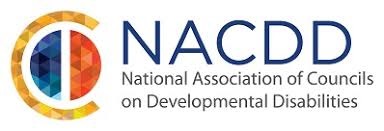Vision
Californians with developmental disabilities are guaranteed the same full and equal opportunities for life, liberty, and the pursuit of happiness as all Americans.
Mission
The Council advocates, promotes and implements policies and practices that achieve self-determination, independence, productivity and inclusion in all aspects of community life for Californians with developmental disabilities and their families.
SCDD Bylaws
Plain Language Bylaws
State Plan
What is the State Council on Developmental Disabilities?
The State Council on Developmental Disabilities (SCDD) is established by federal law (Developmental Disabilities and Bill of Rights Act) and state law (Lanterman Act at Welfare and Institutions Code, section 4520 et. seq.). SCDD is to ensure that individuals with developmental disabilities and their families participate in the planning, design and receipt of the services and supports they need which promote increased independence, productivity, inclusion and self-determination. Federal law requires SCDD to identify methods to improve and increase services for individuals and their families and to submit these to the federal government in the form of a State Plan. The State Plan is approved by the federal Administration on Intellectual and Developmental Disabilities (AIDD). AIDD is the funding source for SCDD and its State Plan Activities. SCDD and its regional offices’ primary work is achieving the State Plan goals, objectives, and strategies.
The Council is comprised of 31 members appointed by the Governor, including individuals with disabilities, their families, federally funded partners and state agencies.
In addition to headquarters in Sacramento, the Council supports 12 regional offices that provide services to individuals with developmental disabilities and their families including, but not limited to, advocacy assistance, training, monitoring and public information. By providing these services, regional offices ensure that appropriate laws, regulations and policies pertaining to the rights of individuals are observed and protected. Each regional office participates in the development and implementation of the Council’s goals and objectives.
Councils on Developmental Disabilities are established in each state through the federal Developmental Disabilities Assistance and Bill of Rights Act. This Act also creates state protection and advocacy systems, university centers for excellence, and projects of national significance (see Council Links and Resources page). Each entity has a federally-assigned responsibility designed to improve services for individuals with developmental disabilities and their families, and enhance independence, productivity and inclusion.
How does the Council define developmental disability?
The federal definition of developmental disabilities covers persons whose disability occurs before age 22 and includes a mental or physical impairment or a combination of both. There must be a substantial limitation in three or more of these major life areas: self-care; expressive or receptive language; learning; mobility; capacity for independent living; economic self-sufficiency; or self-direction.
As a federally mandated and funded agency, one of the Council’s functions is to ensure that its programs, projects and activities are available to persons who meet the federal definition of developmental disabilities. This is accomplished through the approved State Plan, as implemented by: Council actions; the Program Development Fund grants that provide start-up funds for innovative and needed services; and the 12 local Regional Offices on Developmental Disabilities through planning and coordination at the local level.
In California law, a developmental disability is more narrowly defined as occurring before the age of 18 and includes specific categories of eligible conditions: intellectual disability, epilepsy, cerebral palsy, autism, and “conditions requiring services similar to those required for persons with intellectual disabilities.” California law requires that the individual be substantially handicapped by the disability. In March 2004, new regulations took effect that define substantial disability as significant functional limitations in three or more of the major life activities contained in the federal definition above.
How many people in California have a developmental disability?
The May 1, 2023 statewide population, as reported by the California Department of Finance Demographics Unit, was 38,940,000. By using the Gollay and Associate national prevalence estimate of 1.58 percent, an estimated 615,252 of those Californians met the federal definition of a developmental disability.
To determine the most recent estimates for California or any of its counties, visit the California Department of Finance (DOF) website for updated demographic information. Estimates of individuals who meet the federal definition of developmental disability can be obtained for any population area in California by using the DOF demographic information and multiplying the number by .0158.
Disclaimer, Purpose and Guidelines. The purpose of this site is to communicate matters of public interest.
The appearance of external links on this site does not constitute an endorsement of the linked sites and their content by SCDD.
The Storytellers Blog Page will not share or sell your personal information to anyone.
Share Our Stories. Feel free to share and re-post news you see on our page. If you follow us on Facebook, X, or LinkedIn you can re-post our material there, too.
The Storytellers Blog Page is licensed under a Creative Commons Attribution-NonCommercial-NoDerivs 3.0 Unported License.


